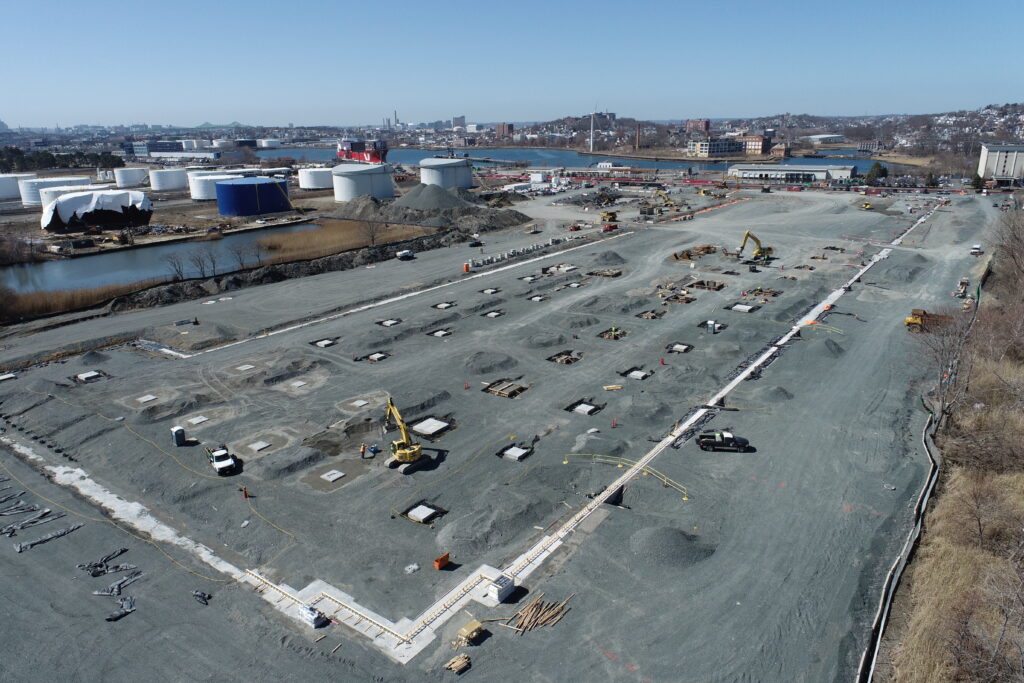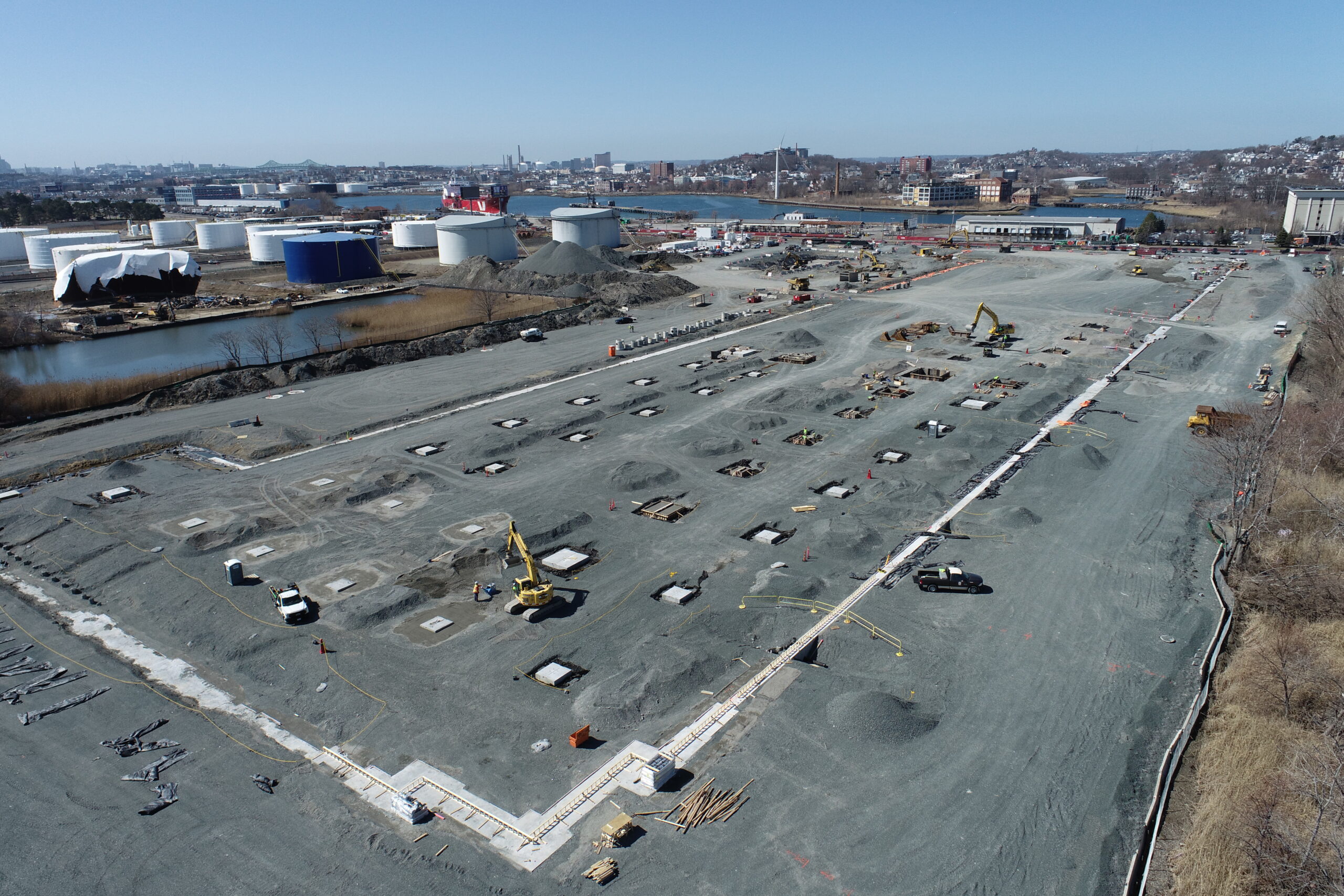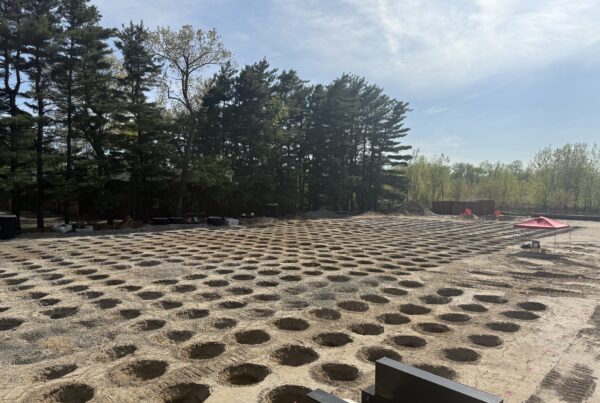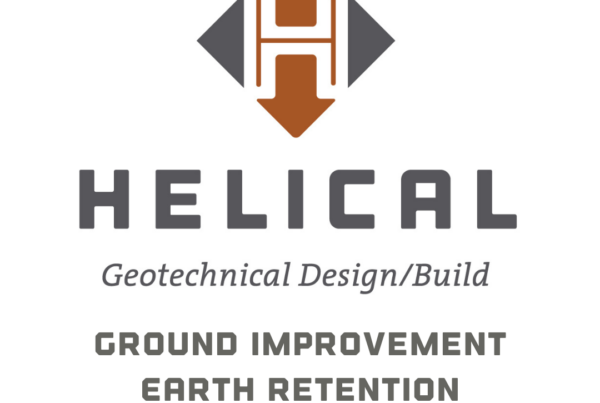
Photo Credit: Haley & Aldrich
An advantage of using Geopier® Rammed Aggregate Pier® (RAP) or GeoConcrete Column® (GCC) rigid inclusion ground improvement to address unsuitable soil conditions is the potential for using a higher allowable design bearing pressure for footing design. Let us take a closer look using an example on how that could translate into Owner cost savings.
We will assume that there are unsuitable soil conditions, and the geotechnical engineer is recommending Geopier RAP or GCC ground improvement to support building foundations. Let us also assume that the average column load is 400 kips. If the recommended improved allowable bearing pressure is conservatively 4 kips per square foot (ksf), then each footing would be designed at about 10 feet square on the structural foundation plans. However, if based on our experience there was an unrealized improved allowable bearing pressure of 6.5 ksf, then each footing would have been designed at about 8 feet square on the foundation plans. This seemingly minor design modification would translate into approximately 35% concrete volume savings compared to the 10-foot square footing. With concrete currently at about $350-400/CY (formed and poured in place, not just the raw concrete cost!), this can add up to significant cost savings for the Owner. Smaller footings can also expedite schedule, require less steel reinforcement (providing further cost savings), and require less cement, which has a lower carbon footprint.
TAKEAWAYS – If you are a consulting engineer that is recommending ground improvement on a project, please do not hesitate to reach out regarding allowable design bearing pressure to help maximize Owner value. Primary advantages include:
- Significant concrete cost savings
- Steel reinforcement cost savings
- Faster schedule
- Lower carbon footprint



